市场资讯及洞察
.jpg)
上周我们看到美联储在十月的利率决议一如市场预期的进行了25个基点的降息操作,在决议公布后全球的金融市场波动较为平淡;但是重点集中在鲍威尔和记者在一些尖锐问题上的看法和一些话外音当中。利率决议重要信息总结:预期管理方面:
- 全面否认12月必定降息的预期,美联储官员内部存在分歧
- 利率已经接近中性利率,在这个观点上相较于九月来说有所提升
- 在风险平衡方面表示通胀问题暂时比就业问题影响要大
就业数据方面:
- 就是市场放缓,但是病危显著恶化
- 将主要因素归功于劳动力供给下降
通胀
- 9月CPI表现温和,剔除关税核心PCE 2.3-2.4%
- 服务通胀(除住房)“横盘”,将逐步回落
资产负债表
- 将在12月1日起停止缩表,已达“充裕储备”
- 未来再投资短期美债,缩短久期
- 准备金将随现金增长自然下降,但“不会太久”
其他方面答记者问:
- AI投资对利率不敏感,对AI泡沫化表示不是工作重点
- 车贷和商业地产的次级贷违约局部、可控,未系统性蔓延
- 银行资本十分充足,整体金融体系稳健,压力测试并无风险
对鲍威尔讲话的数据交叉验证尽管从鲍威尔本次的利率决议中我们发现市场并没有过度敏感,甚至在鲍威尔口中一切欣欣向荣,数据空窗期只给美联储的决策带来了小部分影响,但是并不会对整体经济走势带来大的逆转,所以全球市场并未表现出任何的过度恐慌和逆向交易,在短暂波动中便产生了震荡的收敛,但是事实也许并无那么乐观。就业方面:根据已知数据,美国现阶段就业“稳固”:失业4.3%(BLS数据),随后陷入了数据真空期,而我们也可以从图表中看到,失业率数据在2025年整体上呈现上升态势,也许现在的真空隐藏了数据中最会促使市场衰退恐慌的一面,而鲍威尔通过一句整体稳健维持市场对美联储决策方向的信心;恰巧利用了该真空期对市场进行议论新的预期管理。

通胀方面:如果对美国通胀进行长期的观测会看到实际上美国通胀水平已从疫情期间回归常态,而逐渐在现水平出现下行放缓的迹象,尽管鲍威尔提及了关税可能带来的影响,但是随后中美会谈对关税带来的通胀影响实际上是多方利好,从通胀角度看,美联储的压力将会逐步缩减,但是也从长期中可以关注为何鲍威尔会重点强调中性利率的攀升,而这也会对市场对长期的利率预期产生一定程度的影响。
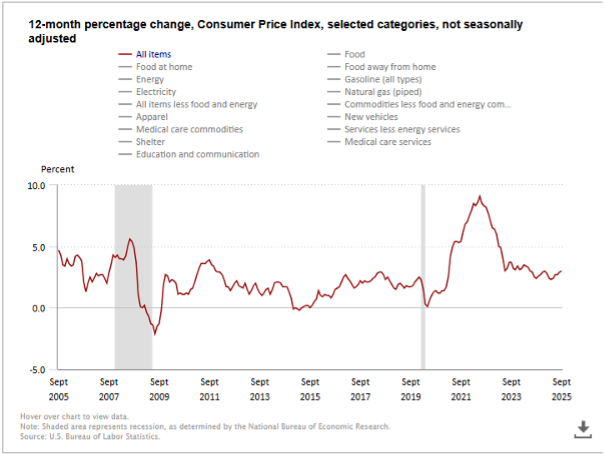
美国现在的次级贷问题:近期市场十分关注的二手车暴雷事件在两周前引起了一波小范围的恐慌,本次利率决议记者也就该问题对鲍威尔进行了相关问答,美联储主席在该话题上表现得非常含糊粉饰太平,基本上话语中处处透露本次事件影响范围较小,不会带来较大范围的扩散和金融市场的整体压力,但是实际数据并非如此支持。

从真实数据上看多重数据显示房地产由于受到了08年的教训影响,整体违约率水平处于低位看起来并不存在大范围暴雷的潜在危机,但是二手车和商业地产确实实打实的在数据上已经亮起了黄灯。如果接下来出现中等银行的挤兑和暴雷那将是对金融系统带来真正意义上的考验。结论来看:从近期中美更新合作协议,降低关税来看,美国的通胀压力或将不会过度挤压美联储后续的政策空间,但是美国的失业率真空也许会在公布后给美国带来一定程度的惊吓,而鲍威尔尽管言辞已经极其谨慎仍然在次级贷近期的问题上表态过于乐观,各类型数据并不支持该市场不存在隐患的定论,对于风险偏好类的投资,也许赛道的拥挤或将拱火危机进行进一步发酵,所以在投资偏好和风险均摊上投资者应进行更进一步的风险管理。
免责声明:GO Markets 分析师或外部发言人提供的信息基于其独立分析或个人经验。所表达的观点或交易风格仅代表其个人;并不代表 GO Markets 的观点或立场。
联系方式:
墨尔本 03 8658 0603
悉尼 02 9188 0418
中国地区(中文) 400 120 8537中国地区(英文) +248 4 671 903
作者:
William Zhao | GO Markets 墨尔本中文部
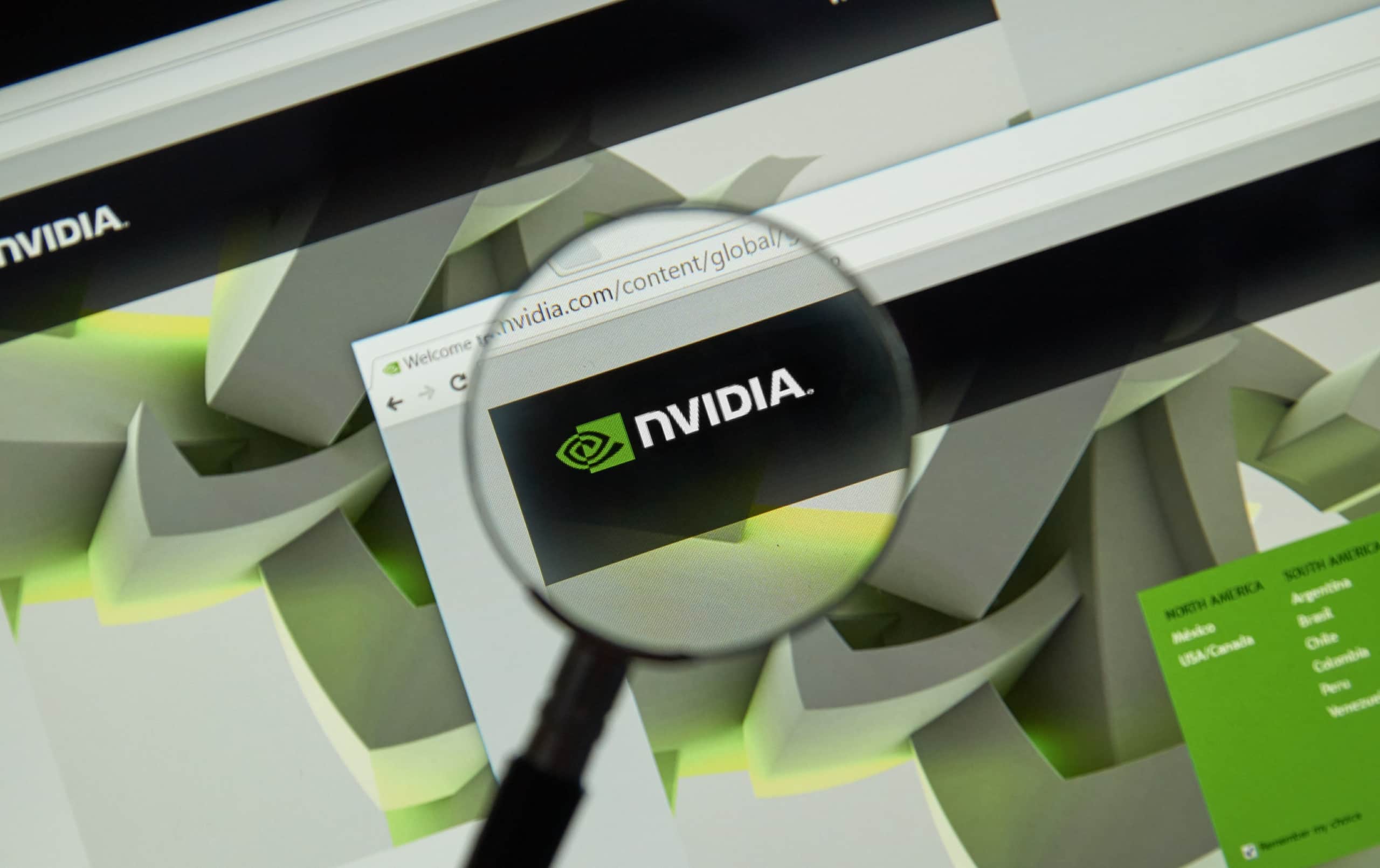

Results are in – NVIDIA reports NVIDIA Corporation (NVDA) announced its second quarter results after the closing bell in the US on Wednesday. The US technology giant reported revenue that exceeded analyst expectations at $6.704 billion for the quarter vs. estimate of $6.699 billion. Earnings per share reported at $0.51 per share, narrowly beating estimate of $0.50 per share for the second quarter. ''We are navigating our supply chain transitions in a challenging macro environment and we will get through this,'' founder and CEO of NVIDIA, Jensen Huang said in a statement following the latest results. ''Accelerated computing and AI, the pioneering work of our company, are transforming industries.
Automotive is becoming a tech industry and is on track to be our next billion-dollar business. Advances in AI are driving our Data Center business while accelerating breakthroughs in fields from drug discovery to climate science to robotics.'' ''I look forward to next month’s GTC conference, where we will share new advances in RTX, as well as breakthroughs in AI and the metaverse, the next evolution of the internet. Join us,'' Huang added.
NVIDA expects revenue of around $5.9 billion for the third quarter, which is short of analyst estimate of $6.9 billion for the quarter. NVIDIA Corporation (NVDA) chart Shares of NVIDIA were little changed on Wednesday, up by 0.24% at $172.12. The stock fell in the after-hours by around 3% on future outlook.
Here is how the stock has performed in the past year: 1 month -3.19% 3 months +1.46% Year-to-date -41.44% 1 year -22.47% NVIDIA price targets Truist Securities $216 Mizuho $250 Raymond James $240 Barclays $200 Deutsche Bank $175 Citigroup $285 Keybanc $230 NVIDIA Corporation is the 13 th largest company in the world with a market cap of $429.17 billion. You can trade NVIDIA Corporation (NVDA) and many other stocks from the NYSE, NASDAQ, HKEX and the ASX with GO Markets as a Share CFD. Sources: NVIDIA Corporation, TradingView, MetaTrader 5, Benzinga, CompaniesMarketCap
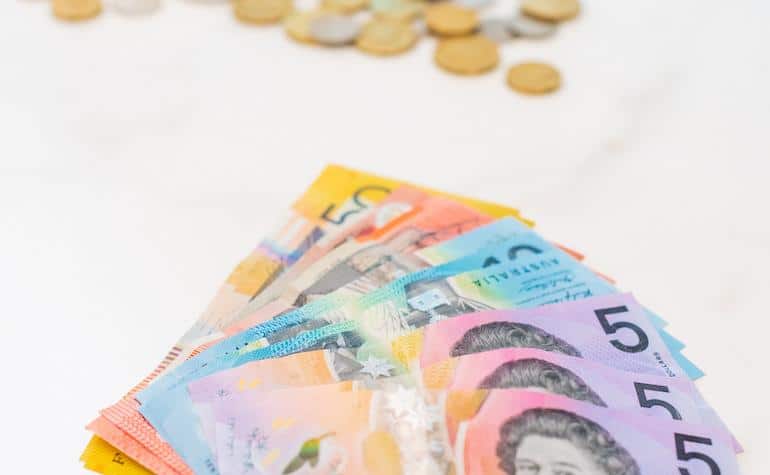

The Reserve Bank of Australia, (RBA) has increased the Country’s cash rate by half a percent to combat the rising inflation in its latest cash rate change. The increase was in line with most analyst’s expectations as the RBA continues to fight inflation and bring it back into the 2-3% range. The current forecast from the RBA suggests that CPI inflation will peak near 7.75% over 2022, before falling to 4% during 2023, and then settling at 3% in 2024.
A key source of concern for the RBA was and continues to be the current spending habits of Australian households. Importantly, as the cost of goods has risen due to inflation, pressure has built on household budgets and their spending habits. This has been caused by both the supply chain issues and the increased cash rate.
Furthermore, consumer confidence has fallen, and “housing prices are declining after the large increases in recent years.” This shows how interest rate hikes are impacting the lives of Australians and their spending habits. Another important factor at play is the tightening of the job market. The unemployment rate dropped in June to 3.5%, the lowest rate in 50 years, and job vacancies and job advertisements continue to be at high levels.
However, the bank does not expect to be able to hold these levels and predict the rate of unemployment will reach 4% by the end of 2024 as a result of the current slowing economic growth. In response to the announcement, the ASX200 responded positively as investors saw the announcement as bullish, shooting up 0.38% in the 30 minutes after the announcement. Conversely, the AUDUSD dropped back below $0.70 dropping to $0.6970 in the 30 minutes immediately after the announcement.
The RBA will later this week further update the market with its monetary policy statement which will provide further clarity on its decision-making and the current sentiment.
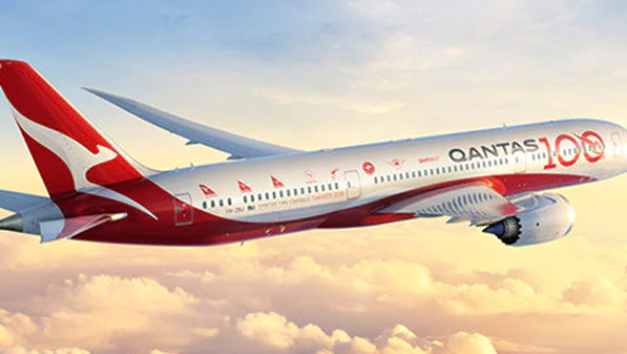

Qantas Airways Limited (QAN:ASX) is the flagship carrier of Australia and the country's largest airline by fleet size. The company has had a resurgence in 2022 and the share price has rebounded from the lows of the pandemic. The “Flying Kangaroo” as it’s known throughout the industry, said that it would report an underlying pre-tax profit of up to A$1.3bn (US$815mn) in the six months to December, doubling market estimates, as strong demand for flights offsets higher fuel costs and inflation.
The improved financial performance has come from the company transferring the increased costs via increased fairs. The share price for the airline soared to $5.83, its highest level since November 2021, on the back of the strong profit forecast. Qantas’s pre-pandemic share price was sitting at $7.35 AUD and saw its financial performance suffer with 3 consecutive years of more than A$1bn losses because of pandemic restrictions and lost A$25bn of revenue during the period.
Net debt, which spiralled to almost A$6.5bn during the pandemic, is expected to fall to between A$3.2bn and A$3.4bn by the end of the year, well below the airline’s A$3.9bn target range. Alan Joyce, Chief Executive gave a promising statement on the company’s performance advising, “It’s been a really challenging time for the national carrier, but today’s announcement shows how far we’ve come. Since August, we’ve seen a big improvement in our operational performance and an acceleration in our financial performance.” The report in profits has come too late for investors to receive a final dividend this year, with the company deciding not to reverse its decision to halt dividend payments.
However, it’s not all doom and gloom for investors, as Alan Joyce has led a A$400mn share buyback this year. Share buybacks do not put cash in the hands of investors as a dividend does. However, they do support shareholders by reducing the overall share count.
This tends to boost the share price, given that under the laws of supply and demand, less supply leads to a rise in price. If you are interested in venturing into trading stocks, FX or commodities, you can create access to one of our MetaTrader 5 trading CFD platforms with GO Markets here or call our Melbourne based office on 03 8566 7680 to discuss your trading goals with our account managers and to get started. Sources: https://www.ft.com/, https://au.finance.yahoo.com/, https://www.fool.com.au/
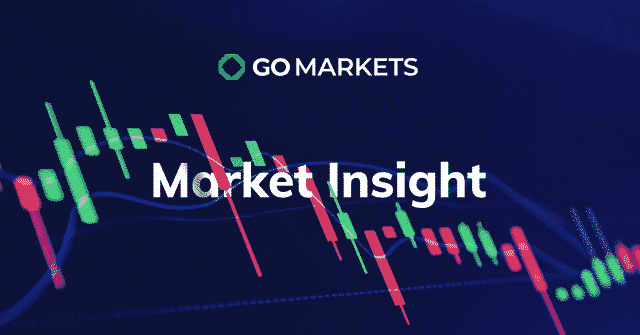

Oracle Corporation reported its fiscal 2022 third quarter financial results after the closing bell on Wall Street today. The US software and hardware manufacturer reported revenue of $10.513 billion vs. $10.506 billion expected. Earnings per share at $1.13 per share, falling short of analyst estimate of $1.18 per share.
The company also announced a quarterly cash dividend of $0.32 per share of outstanding common stock "In Q3, Oracle delivered over 7% constant currency revenue growth—our highest quarterly organic revenue growth rate since we began our transition to the cloud," said Oracle CEO, Safra Catz following the latest results. "This strong top line growth was coupled with a solid non-GAAP constant currency operating profit growth of 4%, but the big story is that our overall revenue growth is being driven by both our rapidly growing Cloud Infrastructure and Cloud Applications businesses. Q3 Cloud Infrastructure revenue was up 47% in constant currency. Q3 Cloud Applications growth was led by Fusion ERP, which was up 35% in constant currency and NetSuite ERP which was up 29% in constant currency.
Total Cloud revenue which includes Cloud Infrastructure and Cloud Applications is now over $11 billion a year," Catz added. Oracle Corporation (ORCL) Shares of Oracle were little changed at the end of trading on Thursday, up by 0.84% at $76.70 a share. Here is how the stock has performed in the past year – 1 Month: -6.22% 3 Month: -13.53% Year-to-date: -11.98% 1 Year: +13.87% Oracle is the 49 th largest company in the world with total market cap of $204.85 billion.
You can trade Oracle Corporation (ORCL) and many other stocks from the NYSE, NASDAQ, HKEX and the ASX with GO Markets as a Share CFD. Trading Derivatives carries a high level of risk. Sources: Oracle Corporation, TradingView, MetaTrader 5, CompaniesMarketCap
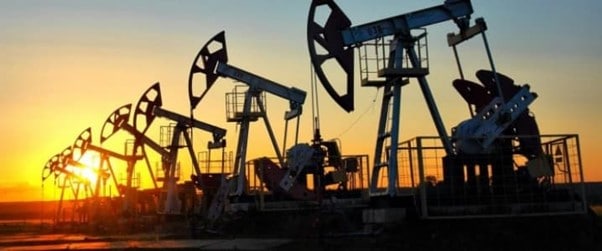

Oil has continued its tumble from its March 2022 high of $131 per barrel down to $82 a barrel. The drop has been in response to weak economic figures from China and the USA which has added to the recessionary anxiety gripping the market. Furthermore, as Iran edges closer to a nuclear deal, the removal of economic sanctions on the country may be able to provide 2.5 million barrels a day to the global supply.
The drop has also coincided with a rebound in equities as the possibility that central banks may soften their aggressive interest-raising regime has entered the market. Further industry data released from the USA outlining their Crude stockpiles due later on Tuesday, may also impact the price in the short term. The recent drop has pushed the price of both Crude and WTI to 6-month lows not seen since before the Russia and Ukraine crises.
On the daily chart, both Brent and WTI are sitting on areas of support between $85-$93 and $83-$90 respectively. The price for both Brent and WTI has also dipped below the 200-day moving average indicating a medium-term bearish shift. The question remains, is this just a retracement, or a reversal of exhaustion?
Due to the prices being resting near their area of support and the RSI consolidating between 25-45, this does indicate a possible bounce. If the RSI can break above the recent consolidation/range or 45 and the general price of the commodity can bounce off its support, there may be the potential for buying opportunities. With any trade and especially those involving commodities, there are always external risks to consider that may invalidate the current trading strategy.
For instance, if inflation becomes less of an issue and central banks begin to taper their aggressiveness in fighting inflation, the price of oil may begin to slip. Therefore, this is a trade that can in which the utilisation of both technical and fundamental analysis can be done.


NIO Inc. (NIO) reported its latest delivery numbers for February on Tuesday. The Chinese electric vehicle company delivered 6,131 cars last month – an increase of 9.9% year-over-year. The deliveries in February consisted of: 1,084 ES8s – the company’s six-seater or seven-seater flagship premium smart electric SUV 3,309 ES6s – the company’s five-seater high-performance premium smart electric SUV 1,738 EC6s – the company’s five-seater premium smart electric coupe SUV NIO has delivered a total of 182,853 electric vehicles as of 28 th February, 2022.
NIO Inc. (NIO) Shares of NIO were down by 4.25% at the end of the trading day on Tuesday at $21.87 per share. Here is how the stock has performed in the past year – 1 Month: -11.96% 3 Month: -44.11% Year-to-date: -30.97% 1 Year: -49.48% NIO is the 15 th largest automaker in the world with a market cap of $34.78 billion. You can trade NIO Inc. (NIO) and many other stocks from the NYSE, NASDAQ, HKEX and the ASX with GO Markets as a Share CFD.
Sources: NIO Inc., CompaniesMarketCap

